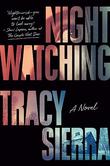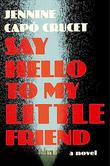
edited by Nikole Hannah-Jones & Caitlin Roper & Ilena Silverman & Jake Silverstein ‧ RELEASE DATE: Nov. 16, 2021
A much-needed book that stakes a solid place in a battlefield of ideas over America’s past and present.
Awards & Accolades
Our Verdict

GET IT
Kirkus Reviews'
Best Books Of 2021
Kirkus Prize
finalist
New York Times Bestseller
A book-length expansion of the New York Times Magazine issue that explores the history of slavery in America and its countless toxic consequences.
Famously denied tenure at the University of North Carolina for her critical journalism, Hannah-Jones sounds controversial notes at the start: There are no slaves but instead enslaved people, a term that “accurately conveys the condition without stripping the individual of his or her humanity,” while the romantic plantation gives way to the more accurate terms labor camp and forced labor camp. The 1619 Project was intended to introduce Black people into the mainstream narrative of American history as active agents. It may have been White people who enslaved them, but apart from the legal and constitutional paperwork, it was Black people who resisted and liberated themselves and others, from their very first arrival at Jamestown, Virginia, in 1619 to the very present. Hannah-Jones and colleagues consider a nation still wrestling with the outcomes of slavery, an incomplete Reconstruction, and a subsequent history of Jim Crow laws and current legal efforts to disenfranchise Black voters. As she notes, the accompanying backlash has been vigorous, including attempted laws by the likes of Sen. Tom Cotton to strip federal funds from schools that teach the 1619 Project or critical race theory. Among numerous other topics, the narrative examines: the thought that the American independence movement was fueled at least in part by the insistence on maintaining slavery as the Crown moved to abolition; the use of slavery to tamp down resistance among poor Whites whose functions were essentially the same as the enslaved but who, unlike Black people, were not considered property; the ongoing appropriation of Black music, which has “midwifed the only true integration this country has known,” as Wesley Morris writes, by a machine that perpetuates minstrelsy. Those readers open to fresh and startling interpretations of history will find this book a comprehensive education.
A much-needed book that stakes a solid place in a battlefield of ideas over America’s past and present.Pub Date: Nov. 16, 2021
ISBN: 978-0-593-23057-2
Page Count: 400
Publisher: One World/Random House
Review Posted Online: Aug. 17, 2021
Kirkus Reviews Issue: Sept. 1, 2021
Share your opinion of this book
More by Nikole Hannah-Jones
BOOK REVIEW
by Nikole Hannah-Jones & Renée Watson ; illustrated by Nikkolas Smith
More About This Book
PERSPECTIVES

by David Grann ‧ RELEASE DATE: April 18, 2017
Dogged original research and superb narrative skills come together in this gripping account of pitiless evil.
Awards & Accolades
Likes

21
Our Verdict

GET IT
Kirkus Reviews'
Best Books Of 2017
New York Times Bestseller
IndieBound Bestseller
National Book Award Finalist
Greed, depravity, and serial murder in 1920s Oklahoma.
During that time, enrolled members of the Osage Indian nation were among the wealthiest people per capita in the world. The rich oil fields beneath their reservation brought millions of dollars into the tribe annually, distributed to tribal members holding "headrights" that could not be bought or sold but only inherited. This vast wealth attracted the attention of unscrupulous whites who found ways to divert it to themselves by marrying Osage women or by having Osage declared legally incompetent so the whites could fleece them through the administration of their estates. For some, however, these deceptive tactics were not enough, and a plague of violent death—by shooting, poison, orchestrated automobile accident, and bombing—began to decimate the Osage in what they came to call the "Reign of Terror." Corrupt and incompetent law enforcement and judicial systems ensured that the perpetrators were never found or punished until the young J. Edgar Hoover saw cracking these cases as a means of burnishing the reputation of the newly professionalized FBI. Bestselling New Yorker staff writer Grann (The Devil and Sherlock Holmes: Tales of Murder, Madness, and Obsession, 2010, etc.) follows Special Agent Tom White and his assistants as they track the killers of one extended Osage family through a closed local culture of greed, bigotry, and lies in pursuit of protection for the survivors and justice for the dead. But he doesn't stop there; relying almost entirely on primary and unpublished sources, the author goes on to expose a web of conspiracy and corruption that extended far wider than even the FBI ever suspected. This page-turner surges forward with the pacing of a true-crime thriller, elevated by Grann's crisp and evocative prose and enhanced by dozens of period photographs.
Dogged original research and superb narrative skills come together in this gripping account of pitiless evil.Pub Date: April 18, 2017
ISBN: 978-0-385-53424-6
Page Count: 352
Publisher: Doubleday
Review Posted Online: Feb. 1, 2017
Kirkus Reviews Issue: Feb. 15, 2017
Share your opinion of this book
More by David Grann
BOOK REVIEW
by David Grann
BOOK REVIEW
by David Grann
BOOK REVIEW
by David Grann
More About This Book
BOOK TO SCREEN
BOOK TO SCREEN
BOOK TO SCREEN

by Tom Clavin ‧ RELEASE DATE: April 21, 2020
Buffs of the Old West will enjoy Clavin’s careful research and vivid writing.
Rootin’-tootin’ history of the dry-gulchers, horn-swogglers, and outright killers who populated the Wild West’s wildest city in the late 19th century.
The stories of Wyatt Earp and company, the shootout at the O.K. Corral, and Geronimo and the Apache Wars are all well known. Clavin, who has written books on Dodge City and Wild Bill Hickok, delivers a solid narrative that usefully links significant events—making allies of white enemies, for instance, in facing down the Apache threat, rustling from Mexico, and other ethnically charged circumstances. The author is a touch revisionist, in the modern fashion, in noting that the Earps and Clantons weren’t as bloodthirsty as popular culture has made them out to be. For example, Wyatt and Bat Masterson “took the ‘peace’ in peace officer literally and knew that the way to tame the notorious town was not to outkill the bad guys but to intimidate them, sometimes with the help of a gun barrel to the skull.” Indeed, while some of the Clantons and some of the Earps died violently, most—Wyatt, Bat, Doc Holliday—died of cancer and other ailments, if only a few of old age. Clavin complicates the story by reminding readers that the Earps weren’t really the law in Tombstone and sometimes fell on the other side of the line and that the ordinary citizens of Tombstone and other famed Western venues valued order and peace and weren’t particularly keen on gunfighters and their mischief. Still, updating the old notion that the Earp myth is the American Iliad, the author is at his best when he delineates those fraught spasms of violence. “It is never a good sign for law-abiding citizens,” he writes at one high point, “to see Johnny Ringo rush into town, both him and his horse all in a lather.” Indeed not, even if Ringo wound up killing himself and law-abiding Tombstone faded into obscurity when the silver played out.
Buffs of the Old West will enjoy Clavin’s careful research and vivid writing.Pub Date: April 21, 2020
ISBN: 978-1-250-21458-4
Page Count: 400
Publisher: St. Martin's
Review Posted Online: Jan. 19, 2020
Kirkus Reviews Issue: Feb. 15, 2020
Share your opinion of this book
More by Tom Clavin
BOOK REVIEW
by Tom Clavin & Bob Drury
BOOK REVIEW
by Tom Clavin
BOOK REVIEW
by Tom Clavin
© Copyright 2024 Kirkus Media LLC. All Rights Reserved.
Hey there, book lover.
We’re glad you found a book that interests you!
We can’t wait for you to join Kirkus!
It’s free and takes less than 10 seconds!
Already have an account? Log in.
OR
Trouble signing in? Retrieve credentials.
Welcome Back!
OR
Trouble signing in? Retrieve credentials.
Don’t fret. We’ll find you.





